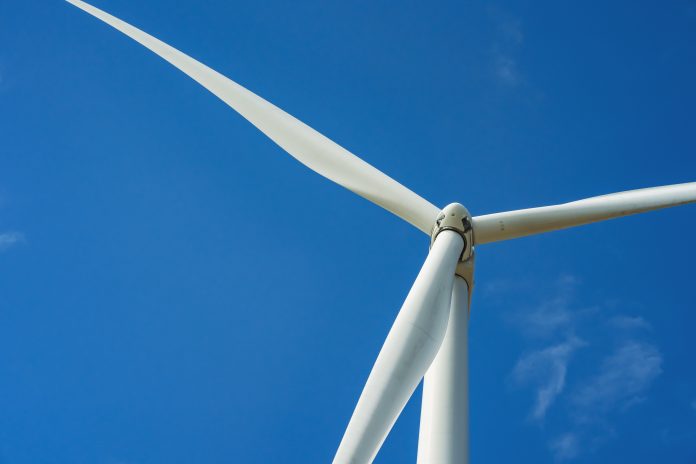Is this really a push for renewable power, or hot air from Boris Johnson? Here, we discuss the literal possibilities of offshore wind power in the UK
Whilst we should all applaud this commitment to increasing our wind energy capabilities, we should also take a peek under the bonnet and find out if this is a realistic objective or simply a political statement from someone coming under increasing pressure for his handling of COVID-19 and Brexit.
Do I sound cynical? Maybe. Is my cynicism justified? Let’s see.
The first thing that struck me about the Prime Minister’s statement was “to ensure that offshore wind will produce more than enough electricity to power every home in the country by 2030, based on current electricity usage, boosting the government’s previous 30 GW target to 40 GW”.
Straight off the bat, “based on current electricity usage” the “Offshore Wind to Power Every Home by 2030” claim is debunked as it relies on their being a zero increase in demand over the next 10 years, which, given our population has grown by more than 5 million people in the last 10 years, is neither plausible, realistic or indeed projected by a single expert on this issue.
Another questionable aspect of the Prime Minsters statement is with the target of 40 GW. Currently in the UK our energy storage capacity from offshore wind is practically zero, so when wind farms produce 40 GW, the amount physically used by households is estimated anywhere between 25 and 35% of the total energy produced. A basic calculation which accounts for this and the likely increase in demand over the next 10 years means the “every home by 2030” claim is more realistically around 30% of households by 2030.
Given that offshore wind currently provides around 15% of our electricity, a doubling of this figure over the next 10 years is indeed a worthwhile exercise, but at what cost, what will make up the shortfall, what reduction in CO2 emissions will it achieve and most importantly of all, how will it reflect in our energy bills?
What would the cost be?
The “Build Back Greener” initiative is part of the wider “Build Back Better” initiative, which will invest £160 million in offshore wind farms, port infrastructure upgrades and factories. This is also estimated to create around 2,000 good paying jobs, which are suitable for those laid off from the gas and oil sectors due to reduced demand as a result of the COVID-19 pandemic.
This means the UK is planning to quadruple its offshore wind capacity over a 10 year period, spending only 10% of the total money invested to date, which created our current 10GW offshore capacity. Cynics would suggest there is something awry with the maths in this equation and they would be quite correct too, as study after study has shown that whilst offshore wind is getting cheaper, if it was getting cheaper to the degree suggested by the numbers above then I’m sure Boris would be whizzing down a zip line somewhere in London to bring everyone’s attention to this fact.
Making up the shortfall
The simple answer is natural gas. Currently over 40% of our energy demand is met by natural gas and this will very likely to continue to be the case, even when offshore wind in 2030 has doubled, to compensate for our lack of energy storage and increased demand. I say likely because a new nuclear power reactor is scheduled to come online in 2025 which will provide an additional 3.2 GW to the grid for a cost of around £20 million and could potentially reduce our reliance on natural gas.
However, as of today, Brexit negotiations are at a delicate juncture, where the French President is leveraging the UK’s reliance on imported energy against fishing rights in UK waters, post Brexit. This has the potential to cause major issues with delivering upon current and future demand.
CO2 reductions
You would think with an investment of £160 million over 10 years, with the goal of reducing CO2, the CO2 reduction target would be a prominent part of the literature or the announcement of the initiate. However, there is actual no mention of the CO2 reductions that would be directly attributed to this initiative, it instead is described as a contributor to the 2050 net-zero target.
Energy bills
It is better the frame this as a question. Does “cheaper, cleaner energy” translate into lower energy bills? The simple answer is no. In no projection, proposal, plan or scenario, which details post 2030 energy bills, is there any suggestion that the cost to you and me using “green energy” at home will be cheaper. The “cheaper” part of this slogan is a reference to the energy production costs. This is confirmed indirectly by the fact contracts for Nuclear power plants and wind farms, in which the Government guarantees energy costs for energy fed into the grid.
Other plans for energy?
In addition to the offshore wind plans the Financial Times has reported that the Build Back Better plan will also cover hydrogen production and infrastructure; carbon capture and storage, low-carbon synthetic fuels for aviation and small modular nuclear reactors.
The UK Government under Theresa May, introduced a ban on new petrol and diesel car sales with a 2040 deadline, but Boris Johnson is also planning to move the ban on forward to 2030 by the end of the year. Whilst this seems like a very good idea to reduce emissions, it could also be framed as “old inefficient, polluting cars will not longer be allowed to be replaced with newer, more efficient, less polluting cars”, which doesn’t sound so good.
Given how the Government has handled both Brexit and COVID-19, cynics, like me, have a hard time accepting the Government’s Build Back Better initiate is the best way to rebuild our economy post COVID-19, when this plan was launched way before COVID-19 even reached our shores.











